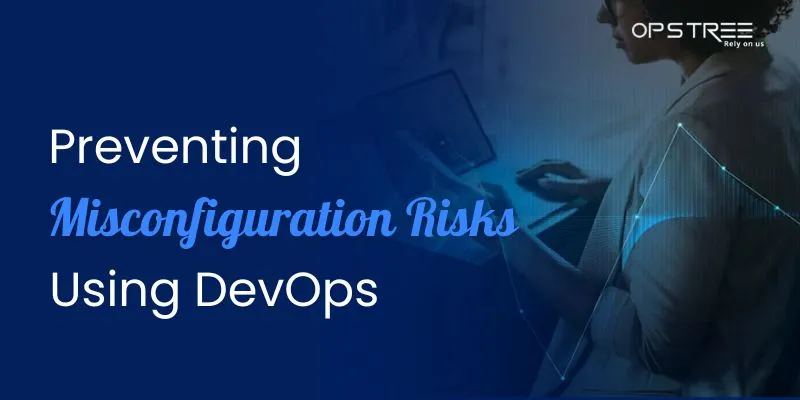Preventing Misconfiguration Risks Using DevOps

Anshul Kichara
Posted on March 19, 2024
Misconfigurations in technology systems can pose significant threats to system reliability, security and performance. These risks no matter where they are, in faulty infrastructure setups, application configurations or deployment processes can result in costly downtime, data breaches and consequently customer dissatisfaction. DevOps adoption has emerged as a saviour to these complications, providing a holistic approach for regulating misconfigurations throughout the software development lifecycle.
In this blog, we'll closely look at some of the key DevOps techniques that can help in combating the risks brought by misconfigurations. Here, we'll discuss different ways in which DevOps solutions can help overcome these problems by continuous monitoring, introducing automation and DevOps configuration management techniques and much more.
[**Good Read: Securing Internal Developer Platforms**]
DevOps Techniques to Minimize Misconfiguration Risks
These DevOps principles would quickly eliminate security misconfiguration vulnerabilities by enabling the synergy between collaboration, automation and continuous monitoring through all the phases of the software development life cycle. Here's how DevOps can reduce misconfiguration errors.
Infrastructure as Code (IaC)
DevOps operations involve the usage of Infrastructure as Code (IaC) tools such as Terraform, Ansible or Chef for specifying and deploying infrastructure in a seamless and automated manner. With the help of the coding process, teams can easily trace the infrastructure configurations and replicate these in new environments automatically. Thus this results in the elimination of the manual configuration mistakes.
Automation
DevOps applies automation as one of its principles. Automated CI/CD pipelines, which conduct various build, test, and deploy steps, lead to fewer human error possibilities in those processes in comparison to manual jobs. Automated testing which especially includes configuring tests and security & compliance checks, enables the detection of security misconfigurations at the early stage of the development lifecycle.
Version Control
DevOps also paves the way for continuous integration and delivery by coding the application as well as the infrastructure in version control. Version control systems like Git equip teams with the means to follow changes and go back to older versions of the files, to work together efficiently. The configuration of the latest code changes and all modifications is tracked to ensure that reviews happen before deployment. This ensures error-free deployments.
Please check here for more info about- Minimizing Misconfiguration Risks Using DevOps Approach

Posted on March 19, 2024
Join Our Newsletter. No Spam, Only the good stuff.
Sign up to receive the latest update from our blog.
